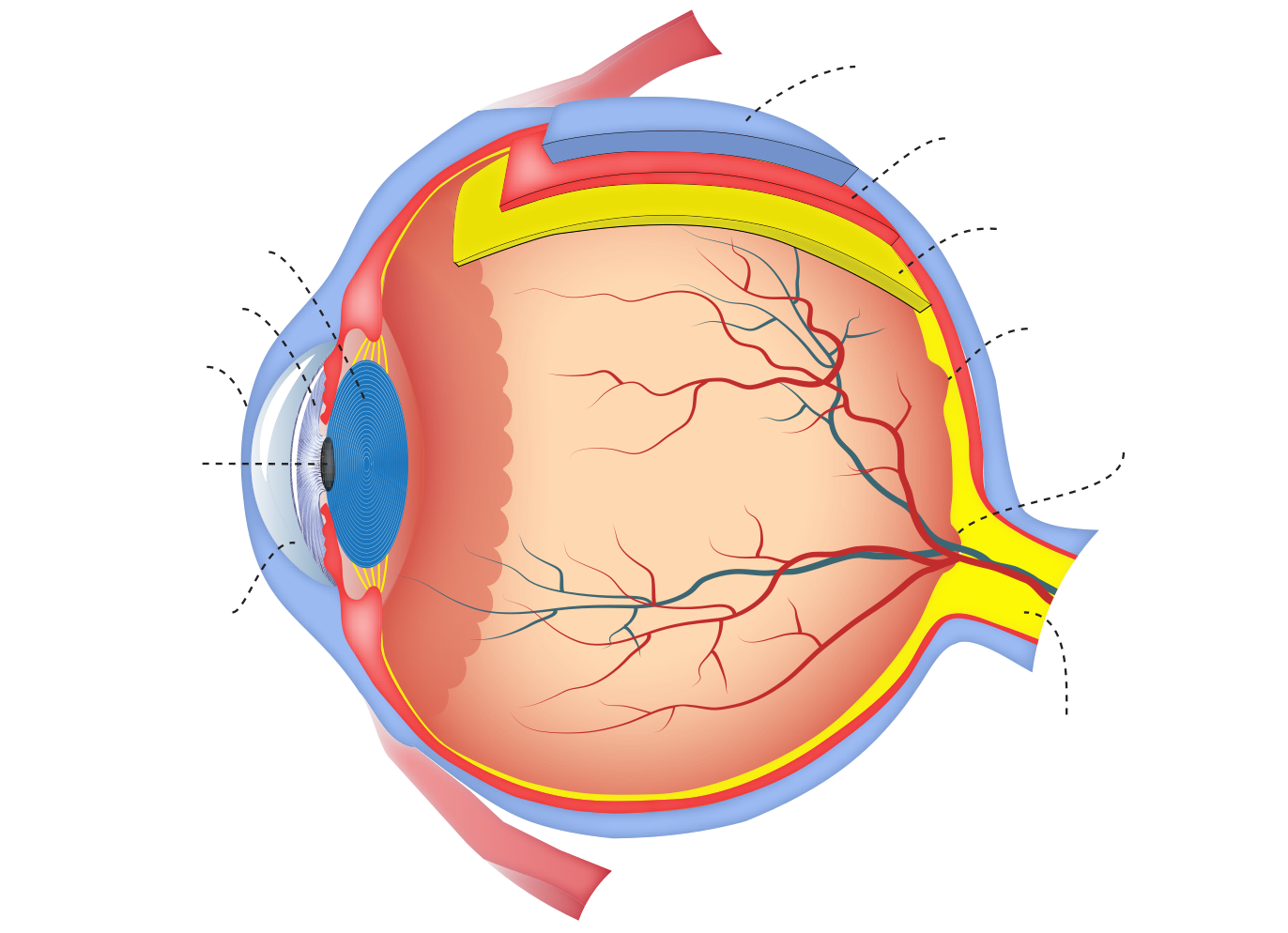Vision Anatomy Review
When we think of how we see, we commonly only think of what happens in the structures in the front of our head (and above the nose!) - the eyes. In fact the eye, although obviously critical, is just the start of a complex process where most of the processing that allows us to recognise the world occurs in the head.
The structures of the eye function to convert the electromagnetic radiations of light into biological signals for relaying to the brain which interprets these signals to allow us to recognise and understand the world.
The signal that the peripheral structures of vision send to the brain are very sophisticated - probably more sophisticated than the information about hearing that the peripheral structures of hearing send to the brain about sound or that the peripheral structures of touch systems send to the brain about what we touch and feel - mainly because the eye actually develops (in embryonic life) as an "outpocket" of the brain.
Drag and drop the labels to their corresponding locations on the diagram.
Progress: 0/0 correctly labelled

